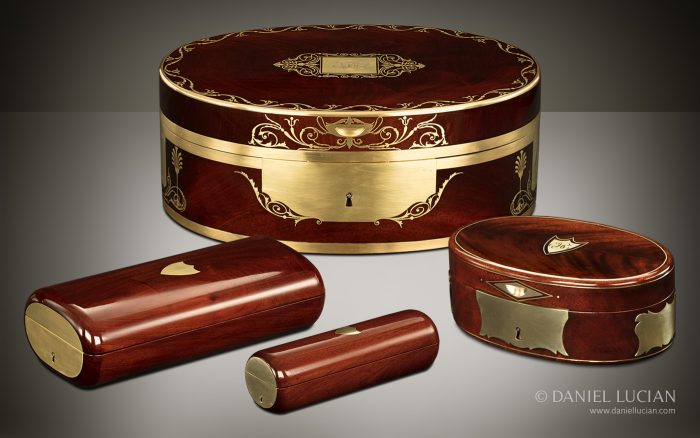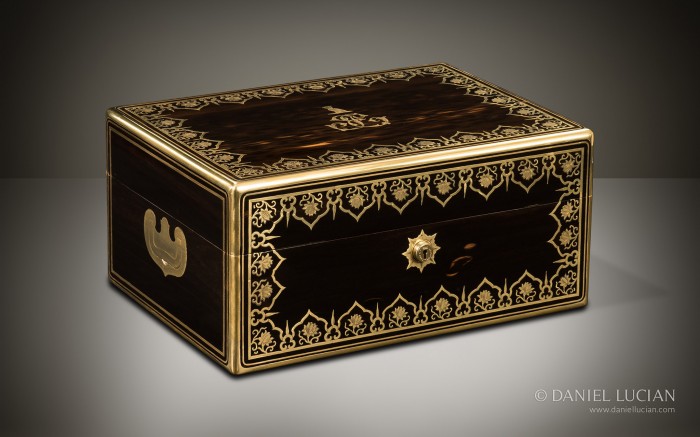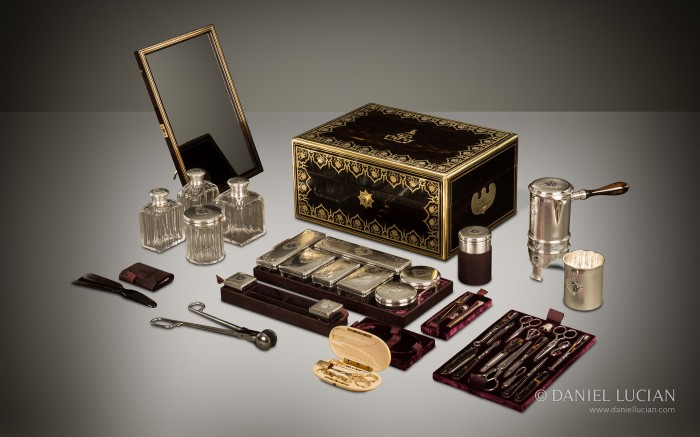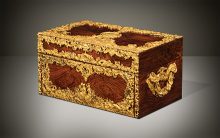History of the French Nécessaire de Voyage
The origins of the French travelling box date back to the late 14th century, with some of the earliest examples containing the most basic equipment for personal grooming. Over the centuries these boxes, most often the property of royalty, nobleman and other wealthy individuals, evolved from purely useful travel accessories into decorative and valuable luxury accessories. With these boxes gaining popularity, variations for toiletries, eating and drinking, sewing, writing, and other scientific purposes were manufactured. During the mid to late 18th century, Ébénistes (cabinetmakers) and Orfèvres (goldsmiths/ silversmiths), recognising their customer’s expanding needs and requirements when travelling, began manufacturing sets that contained all the necessities together. Known as a Nécessaire de Voyage or simply, a Nécessaire, these boxes were made for both ladies and gentlemen, and predated the English dressing cases significantly.
Nécessaires often set themselves apart from their English counterparts by the ingenuity of their interior placement design, as well as their exterior design. Apart from the typical cuboid form, French Ébénistes manufactured Nécessaires in a narrower but deeper form (in the case of the masculine ‘portemanteau’ varieties), or even a curved, radial edged or ellipsoid form. Favouring woods like Mahogany, Walnut, Rosewood, Palisander, Ebony, Elm, Kingwood and Thuya, characteristically French boxes could also include the usage of extravagant brass inlay, Boulle-work (brass inlaid into turtle shell), engraved metalwork, or various woods in combination with each other.
Most of the finest manufacturers and retailers of these Nécessaires were based within very close proximity to the Palais Royal in Paris; some located in grand arcades within the grounds of the palace itself, known as the Galeries du Palais Royal. According to the ‘Statistique de l’Industrie à Paris’, in 1847 there were 158 Parisian manufacturers of Nécessaires who employed 980 people (882 men, 30 women and 68 boys); their collective goods were valued at £155,120 [approximately £15.8 million in today’s money].

French antique nécessaire de voyage boxes, manufactured from Cuban mahogany, in elliptical and circular cylinder forms.


 Price On Application
Price On Application